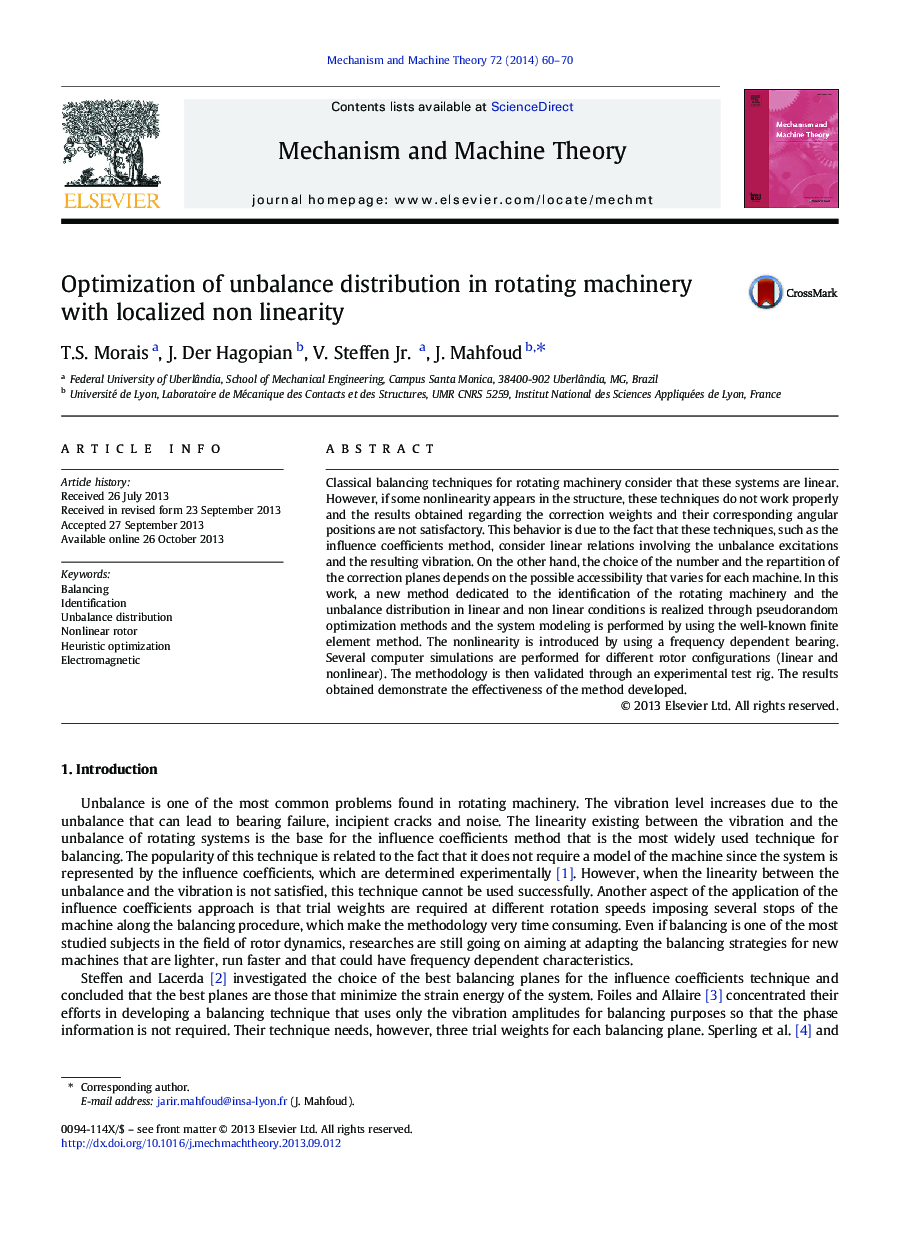| Article ID | Journal | Published Year | Pages | File Type |
|---|---|---|---|---|
| 804721 | Mechanism and Machine Theory | 2014 | 11 Pages |
Classical balancing techniques for rotating machinery consider that these systems are linear. However, if some nonlinearity appears in the structure, these techniques do not work properly and the results obtained regarding the correction weights and their corresponding angular positions are not satisfactory. This behavior is due to the fact that these techniques, such as the influence coefficients method, consider linear relations involving the unbalance excitations and the resulting vibration. On the other hand, the choice of the number and the repartition of the correction planes depends on the possible accessibility that varies for each machine. In this work, a new method dedicated to the identification of the rotating machinery and the unbalance distribution in linear and non linear conditions is realized through pseudorandom optimization methods and the system modeling is performed by using the well-known finite element method. The nonlinearity is introduced by using a frequency dependent bearing. Several computer simulations are performed for different rotor configurations (linear and nonlinear). The methodology is then validated through an experimental test rig. The results obtained demonstrate the effectiveness of the method developed.
